Introduction & Importance of Agriculture
Agriculture is the cornerstone of human civilization. It provides food, raw materials, employment, and drives economic development worldwide. Historically, farming was largely a subsistence activity, where families cultivated enough crops to feed themselves. Today, agriculture has evolved into a sophisticated agriculture business, integrating modern technology, scientific methods, and advanced management practices.
The growth of agribusiness has allowed farmers, cooperatives, and entrepreneurs to scale operations beyond local markets. Modern consumers demand high-quality, organic, and specialty products, making digital marketing a crucial tool for promoting agricultural products, educating consumers, and expanding business reach.
The Importance of Agriculture
- Food Security: Agriculture ensures a steady supply of staple crops, fruits, vegetables, dairy products, and proteins, supporting millions of people worldwide. A robust agriculture sector guarantees national and global food security.
- Economic Growth: Agriculture contributes significantly to the GDP of many countries. Agriculture businesses and agribusinesses stimulate rural economies, create employment, and reduce urban migration.
- Employment Generation: Millions of people are directly employed in farming, while countless others are involved indirectly through agribusiness, supply chains, food processing, and logistics.
- Raw Material Supply: Agriculture supplies raw materials for industries such as textiles, biofuels, food processing, and pharmaceuticals.
- Rural Development: Successful agriculture businesses improve infrastructure, education, and healthcare in rural areas, fostering community growth and stability.
Globally, agriculture accounts for approximately 30% of employment in developing nations. In countries like India, more than 50% of the population relies on agriculture for their livelihood, emphasizing its importance for rural prosperity.
The Evolution of Agriculture
Over the past century, agriculture has undergone a significant transformation:
- Traditional Farming: Small-scale subsistence farming dominated early agriculture, focused on feeding families rather than generating profit.
- Mechanization: Introduction of tractors, harvesters, and irrigation systems improved efficiency.
- High-Yield Seeds: Development of crop varieties increased productivity and ensured food security.
- Chemical Fertilizers & Pesticides: Boosted yield but posed challenges for sustainability and soil health.
- Agribusiness Models: Integration of supply chains, marketing, and exports enabled farmers to participate in large-scale commerce.
- Digital Marketing: Farmers now leverage social media, websites, and online marketplaces to reach consumers directly, enhancing visibility and profitability.
Modern agriculture business is not only about crop production but also about understanding markets, managing resources efficiently, and adopting innovations. Farmers who combine technology, sustainability, and digital marketing are more likely to thrive in today’s competitive environment.
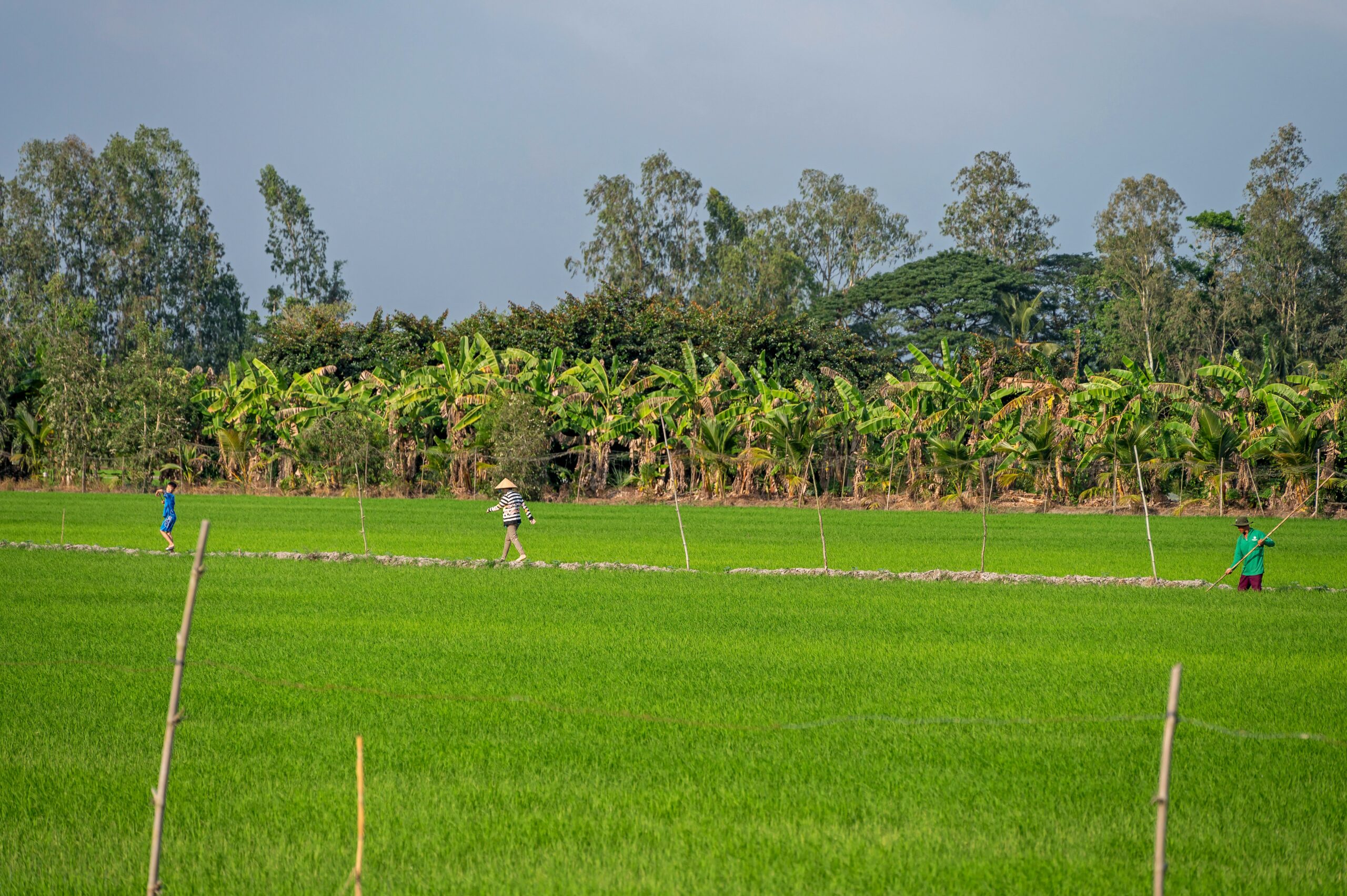
Role of Agriculture in Global Economy
- Contribution to GDP: Agriculture accounts for a significant portion of GDP in countries like India, Brazil, and parts of Africa.
- Exports & Trade: Agricultural products such as spices, coffee, tea, and organic crops are key export commodities.
- Industrial Input: Raw materials from agriculture feed food processing, textile, and biofuel industries.
- Employment & Social Stability: A thriving agriculture sector reduces rural poverty, prevents migration, and strengthens local communities.
Modern Challenges Addressed by Technology
Modern agriculture faces challenges like climate change, soil degradation, water scarcity, and market volatility. However, innovations such as precision farming, smart irrigation, and farm management software help overcome these challenges. Additionally, digital marketing enables farmers to sell products online, build their brand, and increase profitability without relying solely on local markets.
Types of Agriculture & Farming Methods
Agriculture is a diverse field with multiple methods tailored to geography, climate, soil types, available resources, and market demands. Understanding these types of farming is essential for creating a successful agriculture business or agribusiness that is profitable, sustainable, and scalable.
1. Subsistence Farming
Subsistence farming is one of the oldest forms of agriculture. In this method:
- Farmers grow crops primarily to feed their families.
- Surpluses, if any, are sold in local markets.
- There is minimal focus on profit or large-scale production.
- Traditional tools and natural fertilizers are often used.
While subsistence farming ensures food security, it limits the potential for scaling an agribusiness. Modern farmers are increasingly combining subsistence farming with small-scale commercial farming to increase income and sustainability.
2. Commercial Agriculture
Commercial agriculture is focused on producing crops and livestock for sale rather than personal consumption. Key characteristics include:
- Large-scale production aimed at profit generation.
- Use of high-yield seeds, fertilizers, pesticides, and mechanized equipment.
- Strong reliance on market trends and consumer demand.
- Integration into global and national supply chains.
This type of farming forms the backbone of most agriculture businesses and agribusinesses. Commercial agriculture often uses precision agriculture and smart farming techniques to maximize yield and reduce operational costs.
3. Organic Farming
Organic farming emphasizes growing crops without chemical fertilizers or synthetic pesticides. Key points:
- Relies on natural fertilizers such as compost, manure, and bio-fertilizers.
- Focuses on soil health, biodiversity, and long-term sustainability.
- Produces organic fruits, vegetables, grains, and dairy products that fetch higher prices in the market.
- Often requires certifications to validate authenticity for domestic and export markets.
Organic farming is not only eco-friendly but also enhances the market value of an agriculture business, especially when combined with digital marketing to educate consumers and sell products online.
4. Horticulture & Floriculture
Horticulture involves the cultivation of fruits, vegetables, nuts, and ornamental plants, while floriculture focuses on flower production. Key highlights:
- Provides high-value crops for domestic and international markets.
- Often uses greenhouses, drip irrigation, and hydroponics for increased productivity.
- Requires knowledge of climate control, soil management, and pest control.
Horticulture and floriculture are excellent for agribusinesses that target niche markets and specialty products. Modern agri-tech solutions like climate-controlled greenhouses and automated irrigation systems are frequently integrated to optimize yield and quality.
5. Agroforestry
Agroforestry combines agriculture and forestry to create a more sustainable farming system. Features include:
- Planting trees alongside crops or integrating them with livestock.
- Reduces soil erosion, improves biodiversity, and enhances carbon sequestration.
- Provides multiple income streams through timber, fruits, nuts, and medicinal plants.
Agroforestry supports sustainable agriculture practices, enhances farm productivity, and is increasingly promoted by governments and NGOs as part of climate-smart agriculture initiatives.
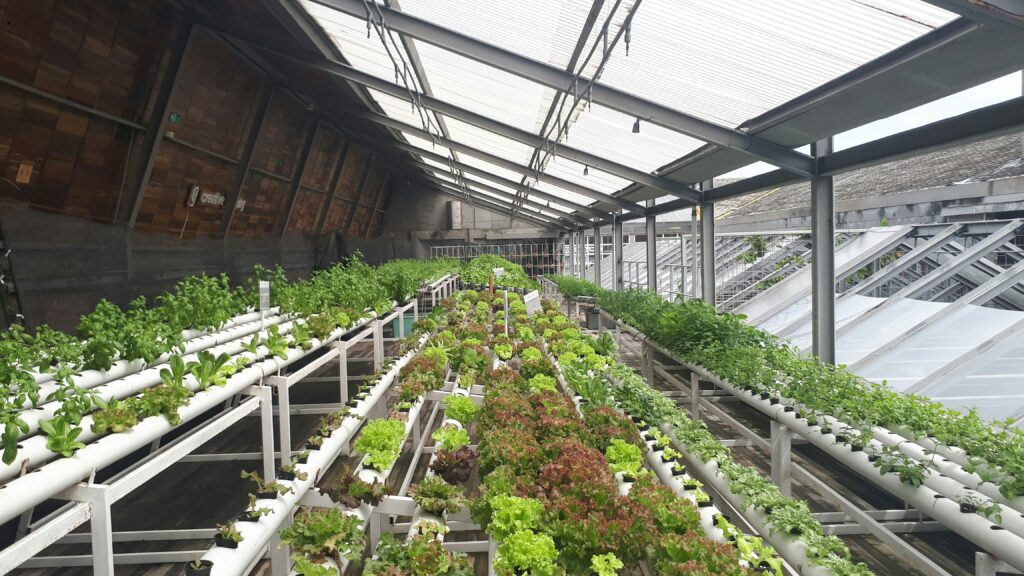
6. Hydroponics & Aquaponics
Hydroponics and aquaponics are soilless farming techniques gaining popularity in urban areas and regions with poor soil quality.
- Hydroponics: Crops grow in a nutrient-rich water solution without soil.
- Aquaponics: Combines fish farming (aquaculture) with hydroponics, creating a mutually beneficial ecosystem.
- Enables year-round crop production with controlled nutrient management.
- Suitable for high-value crops like leafy greens, herbs, strawberries, and tomatoes.
These methods are excellent examples of integrating agri-tech and smart farming to maximize productivity and reduce environmental impact.
7. Precision & Smart Farming
Precision and smart farming involve using technology to monitor and manage crops with high efficiency. Key technologies include:
- Drones: Monitor crop health, soil moisture, and pest infestations.
- Sensors: Measure soil nutrients, temperature, and irrigation needs.
- GPS & Satellite Data: Guide planting, fertilization, and harvesting schedules.
- Farm Management Software: Tracks crop cycles, resource usage, and financial data.
These innovations allow farmers to reduce waste, save resources, and increase overall farm productivity. Precision agriculture is becoming a key driver for successful agribusinesses and agriculture businesses worldwide.
8. Livestock Management
Livestock farming is a critical component of agribusiness, including dairy, poultry, and meat production. Features include:
- Health management through vaccination and nutrition planning.
- Breeding programs to improve productivity.
- Integration with crop farming (e.g., using manure as organic fertilizer).
- Market-oriented strategies for milk, eggs, meat, and other animal products.
Modern livestock management increasingly incorporates agri-tech solutions such as IoT devices for tracking health, automated feeding systems, and AI-based productivity analysis.
9. Integrated Farming Systems
Integrated farming systems combine multiple agricultural activities on the same farm:
- Crop cultivation, livestock, fishery, and horticulture combined.
- Optimizes land and resource use, providing multiple revenue streams.
- Reduces risk from climate or market fluctuations.
Such systems are particularly effective for sustainable agriculture businesses, as they diversify income sources and maximize land productivity.
10. Urban & Vertical Farming
With urbanization, vertical farming and rooftop agriculture are gaining attention:
- Crops are grown in stacked layers using hydroponics or aeroponics.
- Efficient use of space in cities with limited land availability.
- Can supply fresh produce directly to urban markets, reducing transportation costs.
Digital marketing plays a crucial role in promoting urban farming produce, building brand awareness, and connecting with eco-conscious consumers.
Conclusion
Understanding the various types of agriculture allows farmers and entrepreneurs to choose methods that suit their climate, resources, and market strategy. Combining these farming techniques with modern agri-tech solutions, sustainable practices, and digital marketing strategies ensures long-term growth and profitability for agribusinesses.
Modern Techniques & Agri-Tech
Modern agriculture is no longer limited to traditional planting and harvesting. Today, farmers and agribusinesses are leveraging technology, innovation, and digital tools to increase efficiency, productivity, and profitability. These modern techniques are transforming the agriculture sector globally, making it possible for even small-scale farmers to adopt scalable business models.
Precision Agriculture
Precision agriculture is a technology-driven approach to farming that optimizes resource use and improves crop yield. It involves the use of:
- GPS Systems: Track and guide planting, fertilization, and irrigation.
- Drones: Monitor crop health, detect pest infestations, and assess soil moisture levels.
- Sensors: Measure soil nutrients, temperature, and water availability for targeted interventions.
- Data Analytics: Provides insights on crop performance, weather patterns, and market trends.
By using precision agriculture, farmers can reduce waste, save resources, and improve overall farm productivity, which is essential for a profitable agriculture business.
Smart Farming
Smart farming integrates IoT (Internet of Things) devices, artificial intelligence (AI), and automation into daily farm operations. Key features include:
- Automated Irrigation Systems: Use sensors to water crops only when needed, conserving water and energy.
- Climate Monitoring: Predicts weather changes and helps plan planting or harvesting schedules.
- Livestock Tracking: Monitors health, feeding patterns, and reproductive cycles using wearable devices.
- Crop Management Software: Tracks planting schedules, fertilizer application, and growth metrics.
Smart farming ensures sustainable agriculture practices, maximizes yields, and reduces labor dependency, making it a vital component of modern agribusiness.
Hydroponics & Aquaponics
Hydroponics and aquaponics are innovative soilless farming systems that allow year-round production, especially in urban areas or regions with poor soil quality.
- Hydroponics: Plants grow in nutrient-rich water solutions.
- Aquaponics: Combines hydroponics with fish farming, creating a symbiotic ecosystem.
These techniques require knowledge of agri-tech tools, nutrient management, and climate control but offer high yields and high-value crops such as leafy greens, strawberries, herbs, and microgreens. Hydroponics and aquaponics also appeal to health-conscious urban consumers, which can be promoted effectively through digital marketing.
Automation & Robotics in Agriculture
Automation is revolutionizing large-scale farming operations by reducing manual labor and improving efficiency. Examples include:
- Automated Tractors & Harvesters: Perform planting and harvesting faster than manual labor.
- Robotic Weeders & Sprayers: Reduce the need for chemical inputs and labor costs.
- Seed Planters & Fertilizer Dispensers: Ensure uniform planting and efficient resource usage.
By integrating automation, agribusinesses can scale production, reduce human error, and maintain consistent quality—crucial for expanding into regional and international markets.
Sustainable Agriculture Practices
Sustainability is a major focus in modern farming. Techniques that preserve natural resources while maintaining productivity include:
- Organic Fertilizers: Compost, manure, and bio-fertilizers improve soil health.
- Integrated Pest Management (IPM): Combines biological, cultural, and mechanical methods to control pests.
- Agroforestry: Integrates trees with crops to prevent soil erosion, enhance biodiversity, and provide additional income.
- Water Conservation Techniques: Drip irrigation, rainwater harvesting, and smart irrigation systems optimize water use.
- Crop Rotation & Polyculture: Prevent soil depletion and reduce the risk of pest infestations.
Sustainable practices not only protect the environment but also improve profitability for agriculture businesses, especially when marketed as eco-friendly or organic products online.
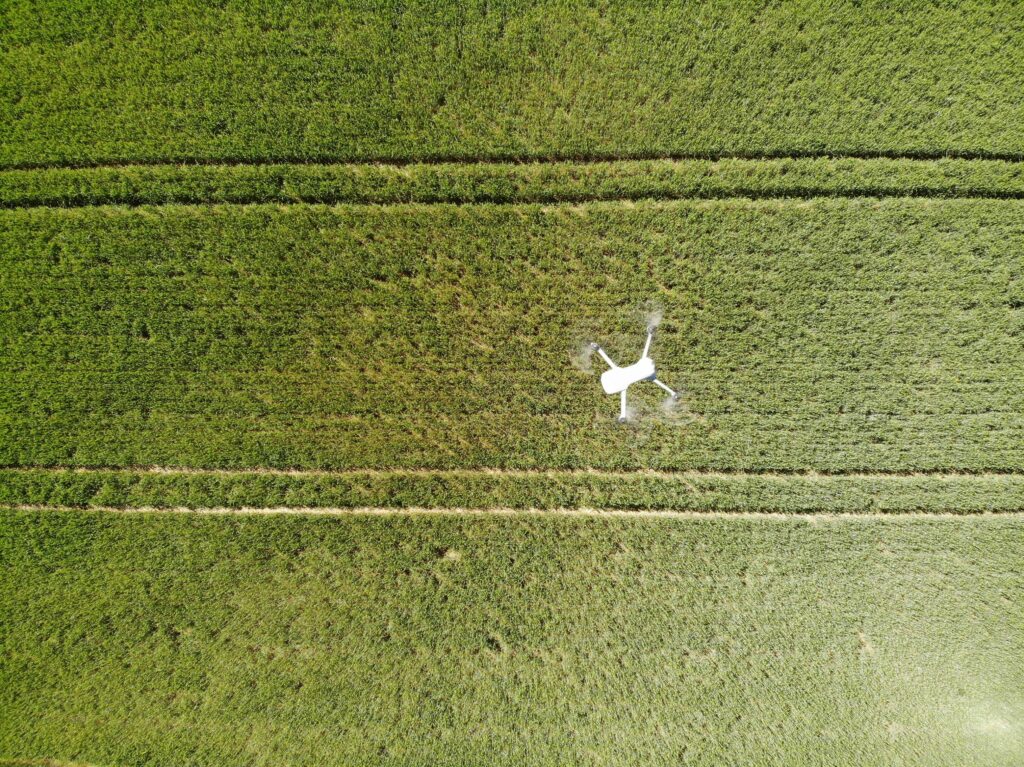
Agri-Tech Tools for Modern Farming
Modern agri-tech solutions are transforming agriculture by providing farmers with actionable insights and tools for better decision-making:
- Farm Management Software: Tracks farm operations, inputs, and outputs for better productivity.
- Mobile Apps: Allow farmers to monitor weather, receive market updates, and sell products online.
- IoT Devices: Monitor soil moisture, temperature, and crop health in real time.
- AI & Machine Learning: Predict crop diseases, optimize planting schedules, and forecast yields.
Adoption of agri-tech tools is essential for farmers looking to scale their agribusiness and compete in the global market.
Benefits of Modern Techniques for Agriculture Business
- Increased Productivity: Smart farming and precision agriculture optimize every input, increasing yield per hectare.
- Reduced Costs: Automation and efficient resource management reduce labor, water, and fertilizer costs.
- Sustainability: Environmentally-friendly practices ensure long-term soil fertility and biodiversity.
- Market Competitiveness: Higher quality crops, consistent supply, and certification (organic or smart farm) enhance brand credibility.
- Digital Marketing Integration: Farmers can showcase their technology-driven, sustainable practices online to attract premium customers.
Challenges in Implementing Modern Techniques
While modern techniques offer many advantages, there are challenges that agribusinesses must overcome:
- High initial investment for drones, sensors, and automation equipment.
- Technical expertise required for data analytics and farm software.
- Maintenance and calibration of high-tech equipment.
- Connectivity issues in rural areas for IoT and smart farming solutions.
Government initiatives, training programs, and digital marketing platforms help bridge these gaps, allowing farmers to adopt modern techniques effectively.
Conclusion
Modern techniques like precision agriculture, smart farming, hydroponics, automation, and sustainable practices are transforming traditional agriculture into a profitable, technology-driven agribusiness. When integrated with digital marketing, farmers can reach wider markets, educate consumers, and establish a strong brand presence.
By leveraging Agri-tech, farmers increase farm productivity, reduce operational costs, and future-proof their agriculture business for global competition.
Challenges in Agriculture & Agribusiness
Agriculture, despite being the backbone of economies worldwide, faces numerous challenges that impact productivity, profitability, and sustainability. Understanding these challenges is critical for farmers, agribusinesses, and stakeholders to implement effective solutions, adopt modern technologies, and leverage digital marketing to expand market reach.
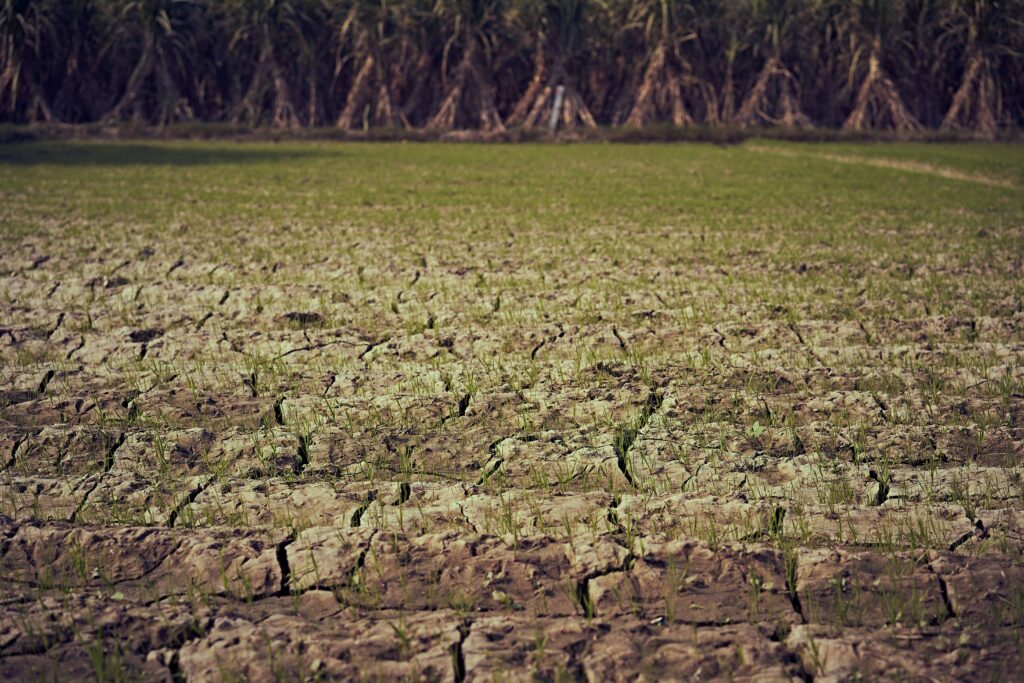
1. Climate Change and Weather Uncertainty
- Erratic Rainfall: Unpredictable monsoons or droughts can devastate crops.
- Floods and Natural Disasters: Heavy rainfall, storms, and floods damage fields and infrastructure.
- Temperature Fluctuations: High temperatures can reduce yields, affect flowering, and compromise crop quality.
- Pests and Diseases: Changing climates create new pest infestations and crop diseases, impacting agriculture business profits.
Farmers increasingly rely on precision agriculture tools, weather forecasting apps, and smart irrigation systems to mitigate these risks.
2. Soil Degradation and Fertility Issues
- Continuous monocropping and excessive chemical fertilizer use degrade soil health.
- Loss of essential nutrients reduces farm productivity.
- Soil erosion, salinity, and contamination further threaten crop yields.
- Sustainable agriculture practices like organic fertilizers, crop rotation, and agroforestry are essential to restore soil fertility.
3. Water Scarcity
- Limited access to irrigation is a major barrier for both small-scale and commercial farmers.
- Overextraction of groundwater leads to depletion and long-term environmental damage.
- Efficient irrigation techniques, such as drip irrigation and rainwater harvesting, are critical solutions.
- Smart farming technologies and agri-tech devices monitor soil moisture to optimize water usage.
4. Market Volatility and Pricing Risks
- Fluctuating crop prices affect income stability for farmers and agribusinesses.
- Lack of direct access to national and international markets often forces farmers to rely on middlemen.
- Digital marketing, e-commerce platforms, and direct-to-consumer sales allow farmers to secure better pricing and stabilize revenues.
5. Limited Access to Technology
- Many small farmers lack access to modern farm technology such as drones, sensors, and precision tools.
- Training gaps prevent effective adoption of agri-tech solutions.
- Investment costs can be prohibitive, especially for mechanized equipment and smart farming tools.
Government programs, subsidies, and online educational platforms can help bridge this technology gap.
6. Supply Chain and Logistics Issues
- Poor transportation, storage, and cold chain facilities lead to post-harvest losses.
- Delays in reaching markets reduce the freshness and quality of produce, affecting profitability.
- Efficient supply chain management, including warehouse automation and transport optimization, is essential for competitive agribusiness operations.
7. Rural Infrastructure and Connectivity
- Lack of roads, electricity, and internet connectivity hinders farm operations and adoption of digital marketing.
- Poor rural infrastructure limits access to markets, financial services, and technical support.
- Improving connectivity is vital for integrating smart farming, e-commerce, and agri-tech innovations.
8. Regulatory and Policy Challenges
- Farmers often face bureaucratic hurdles in accessing subsidies, licenses, and certifications.
- Policies related to pricing, exports, and environmental regulations can impact agriculture business planning.
- Understanding government schemes, digital platforms, and training programs helps farmers navigate these challenges efficiently.
9. Labor Shortages
- Migration to urban areas and declining interest in farming among younger generations create labor shortages.
- Mechanization, robotics, and automated tools are increasingly necessary to maintain productivity.
- Training and awareness programs are required to encourage youth involvement in modern agribusinesses.
10. Financial Constraints
- Limited access to credit, loans, and insurance restricts investment in farm technology, irrigation, and sustainable practices.
- Financial literacy and digital platforms can help farmers manage budgets, track expenses, and access loans for expanding their agriculture business.
Strategies to Overcome Agricultural Challenges
- Adopt Technology: Precision agriculture, smart farming, and agri-tech solutions improve productivity and reduce risks.
- Sustainable Practices: Organic farming, crop rotation, agroforestry, and water conservation maintain long-term soil and environmental health.
- Digital Marketing & E-Commerce: Selling directly to consumers through social media, online marketplaces, and farm websites helps stabilize income.
- Financial Planning: Access to loans, subsidies, and insurance protects farmers from price volatility and natural disasters.
- Education & Training: Online courses, workshops, and government programs enhance knowledge about modern farming methods, agri-tech adoption, and sustainable practices.
- Infrastructure Development: Improved roads, electricity, and connectivity facilitate access to markets and digital tools.
- Collaborative Farming: Cooperatives and farmer associations help pool resources, share technology, and negotiate better prices.
Conclusion
Challenges in agriculture and agribusiness are significant, ranging from climate and soil issues to market volatility and technology gaps. However, with modern farming techniques, sustainable practices, agri-tech adoption, and digital marketing, farmers can overcome these hurdles. Addressing these challenges is crucial for building a resilient, profitable, and future-ready agriculture business.
Digital Marketing in Agriculture
In today’s modern world, digital marketing is no longer optional for farmers and agribusinesses—it is essential. The rise of the internet, social media platforms, and e-commerce has transformed how agricultural products are promoted, sold, and consumed. Agriculture businesses that adopt digital marketing strategies gain direct access to consumers, increase brand visibility, and enhance profitability.

Why Digital Marketing is Important for Agriculture
- Direct-to-Consumer Sales: Farmers can sell products online without intermediaries, ensuring better prices and customer satisfaction.
- Brand Building: Promoting high-quality, organic, or specialty crops builds a recognizable agribusiness brand.
- Customer Engagement: Digital platforms allow farmers to interact with consumers, answer queries, and create trust.
- Market Expansion: With e-commerce, agribusinesses can reach regional, national, and even international markets.
- Cost-Effective Marketing: Compared to traditional advertising, social media campaigns, email marketing, and SEO are affordable and highly targeted.
- Education and Awareness: Farmers can educate consumers about sustainable agriculture, organic farming practices, and the benefits of modern farm technology.
Key Digital Marketing Strategies for Agriculture
1. Social Media Marketing
Social media platforms like Facebook, Instagram, YouTube, and LinkedIn are excellent tools for promoting agriculture products and educating consumers.
- Facebook & Instagram: Share photos and videos of crops, farming methods, and farm-to-table stories.
- YouTube: Publish video tutorials, farm tours, and case studies to showcase your agribusiness.
- LinkedIn: Connect with other agribusiness professionals, suppliers, and potential investors.
Social media marketing increases brand awareness, attracts new customers, and encourages repeat business.
2. Search Engine Optimization (SEO)
SEO ensures that your agriculture business appears in search results when potential customers look for products or services.
- Optimize your website or blog using keywords like agriculture, agriculture business, agribusiness, smart farming, precision agriculture, sustainable agriculture, etc.
- Include long-tail keywords such as “organic vegetable suppliers in India” or “precision agriculture solutions for farmers.”
- Create content-rich blogs, guides, and articles to establish authority in the agriculture sector.
SEO drives organic traffic to your website, generating more leads without additional marketing costs.
3. Content Marketing
Content marketing involves creating informative and engaging material to educate and attract potential customers.
- Blogging: Write articles on modern farming techniques, crop management tips, and agri-tech innovations.
- Infographics & Guides: Visual content explaining sustainable agriculture practices or farm productivity hacks.
- Success Stories: Share case studies of farmers using modern techniques or e-commerce to grow their agribusiness.
Content marketing builds credibility and improves search engine rankings while connecting with your target audience.
4. Email Marketing
Email campaigns help maintain ongoing communication with customers, retailers, and distributors.
- Send updates about new crop availability, seasonal offers, or farm events.
- Share educational newsletters about organic farming, smart farming, and precision agriculture.
- Build loyalty by offering subscription boxes, farm produce updates, and tips for healthy living.
Email marketing strengthens customer relationships and encourages repeat purchases.
5. E-Commerce & Online Marketplaces
Selling agricultural products online expands market reach and increases profitability.
- Platforms like Amazon, Flipkart, Big Basket, and specialized agri-marketplaces allow agriculture businesses to reach urban and international customers.
- Integration with delivery and logistics services ensures timely distribution.
- Direct-to-consumer sales eliminate middlemen, improving margins.
Digital marketing complements e-commerce by attracting traffic and creating awareness about your products.
6. Mobile Apps & Agri-Tech Platforms
Mobile applications provide farmers with tools to manage operations, sell products, and track consumer demand.
- Apps like AgriBazaar, eNAM, and FarmERP connect farmers with buyers, government schemes, and advisory services.
- Mobile apps facilitate precision agriculture, allowing farmers to monitor crop health, irrigation, and soil conditions.
- Integration with digital marketing strategies ensures targeted promotions to potential customers.
7. Influencer & Community Marketing
- Collaborate with influencers, chefs, nutritionists, or wellness bloggers to promote organic produce or specialty crops.
- Create online communities of farmers and consumers to share knowledge, farm updates, and testimonials.
Influencer marketing and community engagement build trust and attract new customers for your agribusiness.
Benefits of Digital Marketing for Agriculture Businesses
- Higher Profit Margins: Direct sales and better visibility reduce dependency on middlemen.
- Market Diversification: Access urban, national, and international consumers.
- Brand Recognition: Build a sustainable brand known for quality, eco-friendliness, and innovation.
- Consumer Education: Promote awareness about sustainable agriculture, organic farming, and farm productivity.
- Data-Driven Decisions: Track consumer preferences, buying patterns, and market trends to optimize production.
- Cost Efficiency: Low-cost digital campaigns reach large audiences without heavy investments.
Case Study: Successful Digital Marketing in Agribusiness
A small-scale organic farmer in India used social media and e-commerce platforms to sell organic vegetables directly to urban consumers. By posting farm updates, sustainable practices, and customer reviews, the farmer:
- Increased monthly revenue by 70%
- Built a recognizable brand within 6 months
- Reduced reliance on local markets and middlemen
- Expanded into subscription-based weekly farm produce boxes
This example shows how digital marketing transforms traditional agriculture into a modern, profitable agriculture business.
Conclusion
Digital marketing has become an indispensable tool for modern agriculture and agribusinesses. By leveraging social media, SEO, content marketing, email campaigns, e-commerce, and mobile apps, farmers can increase visibility, reach new markets, build strong brands, and maximize profitability.
Integrating digital marketing with modern farming techniques and Agri-tech solutions ensures that agriculture businesses remain competitive, sustainable, and scalable for the future.
Future Trends & Innovations in Agriculture
The future of agriculture is evolving rapidly, driven by technology, sustainability, and market innovation. Modern farmers and agribusinesses must embrace new tools, methods, and strategies to remain competitive, increase farm productivity, and expand into global markets.
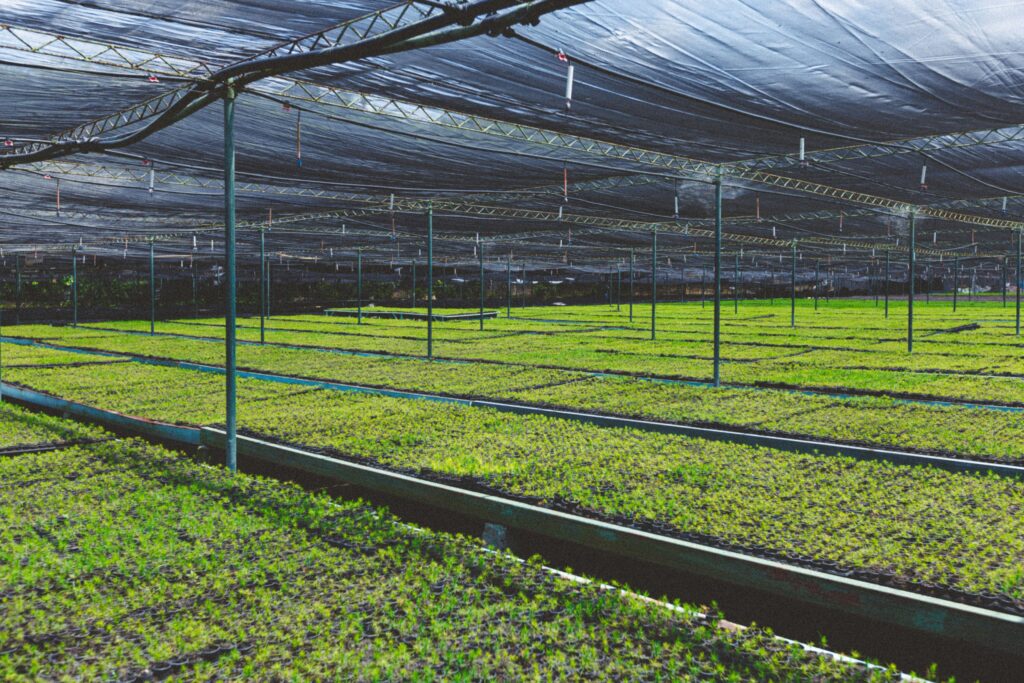
1. Smart Farming and Precision Agriculture
Smart farming integrates IoT, AI, and data analytics into agriculture to improve efficiency and decision-making:
- Drones and Satellite Imaging: Monitor crop health, detect nutrient deficiencies, and optimize irrigation.
- AI-Powered Analytics: Predict diseases, pest outbreaks, and yield outcomes.
- IoT Sensors: Track soil moisture, temperature, and weather conditions in real time.
- GPS-Guided Machinery: Ensure precise planting, fertilization, and harvesting.
Precision agriculture and smart farming reduce resource wastage, lower costs, and maximize yield. Businesses that adopt these technologies gain a competitive edge in the agribusiness sector.
2. Sustainable and Organic Farming Practices
Sustainability will dominate the future of agriculture as consumers increasingly demand eco-friendly and organic products. Key trends include:
- Organic Farming Expansion: Growing consumer preference for chemical-free, natural products.
- Agroforestry and Crop Diversification: Enhances soil fertility, biodiversity, and long-term sustainability.
- Water-Smart Techniques: Drip irrigation, rainwater harvesting, and moisture sensors.
- Renewable Energy Integration: Solar-powered irrigation, bioenergy from crop waste.
Sustainable practices not only protect the environment but also strengthen the brand value of an agriculture business, making it more appealing to urban and international consumers.
3. Vertical and Urban Farming
With increasing urbanization, vertical and urban farming are gaining momentum:
- Stacked Crop Layers: Maximize limited urban space using hydroponics or aeroponics.
- Controlled Environment Agriculture (CEA): Enables year-round production with regulated temperature, humidity, and lighting.
- Local Urban Supply: Reduces transportation costs and provides fresh produce to city consumers.
Digital marketing helps promote these innovative farms by highlighting freshness, sustainability, and urban convenience, attracting premium customers.
4. Agri-Tech Startups and Innovation
The rise of agri-tech startups is transforming the global agriculture landscape:
- Platforms providing farm-to-consumer solutions, supply chain management, and predictive analytics.
- Robotics companies developing automated harvesters, planters, and sprayers.
- Software solutions for crop management, soil testing, and farm accounting.
- Mobile apps connecting farmers with markets, weather forecasts, and advisory services.
Investing in agri-tech innovations allows both small and large-scale farmers to increase productivity, scale operations, and make informed decisions for their agriculture business.
5. Artificial Intelligence and Machine Learning
AI and machine learning are being applied in agriculture to optimize every stage of the crop lifecycle:
- Disease and pest detection using image recognition.
- Predictive yield models to forecast harvests and pricing.
- Automated irrigation and nutrient supply based on real-time soil and weather data.
- Decision support systems for crop rotation, planting schedules, and resource allocation.
AI-powered tools improve efficiency, reduce losses, and help agribusinesses stay competitive in a global market.
6. Blockchain and Supply Chain Transparency
Blockchain technology is revolutionizing supply chain management in agriculture:
- Tracks products from farm to consumer, ensuring authenticity.
- Reduces fraud and ensures fair pricing for farmers.
- Enhances trust in organic and specialty produce through verified certification.
- Helps agribusinesses comply with global export standards.
Blockchain integration with digital marketing highlights transparency, attracting conscious consumers and premium markets.
7. Government Support and Policy Initiatives
Governments worldwide are supporting modern agriculture through:
- Subsidies for modern farm equipment, seeds, and fertilizers.
- Training programs for precision agriculture and smart farming.
- Digital platforms for e-marketplaces, farm advisory, and financial services.
- Policies promoting organic farming, renewable energy, and export incentives.
Leveraging these programs enhances profitability, encourages technology adoption, and helps scale agriculture businesses.
8. Global Agribusiness Opportunities
Modern agriculture is no longer confined to local markets:
- Export of Organic Products: Spices, vegetables, fruits, and grains to international markets.
- High-Value Crops: Specialty crops such as herbs, medicinal plants, and exotic fruits fetch premium prices.
- Agri-Tourism: Farms providing experiential visits, workshops, and farm-stay experiences.
- Collaborations with Food Processing and Retail Brands: Ensures stable demand and long-term contracts.
Digital marketing plays a pivotal role in promoting these global opportunities, connecting farmers directly with international buyers and consumers.
9. Consumer Trends Driving Innovation
Consumer demand is shaping agriculture and agribusiness practices:
- Preference for organic, chemical-free, and sustainably grown products.
- Demand for fresh, locally sourced, and traceable produce.
- Interest in health-focused crops such as superfoods, millets, and medicinal plants.
- Digital engagement, where consumers research, compare, and purchase products online.
Agribusinesses that understand these trends and integrate digital marketing, smart farming, and sustainable practices can capture premium markets and expand globally.
10. The Role of Digital Marketing in Future Agriculture
The integration of digital marketing with future agricultural trends will define successful agribusinesses:
- Online Branding: Highlight innovation, sustainability, and product quality.
- Social Media Storytelling: Show behind-the-scenes farm operations, precision farming methods, and eco-friendly practices.
- SEO & Content Marketing: Educate consumers, improve search engine visibility, and generate leads.
- E-Commerce Integration: Sell specialty and organic products directly to local and global consumers.
- Data Analytics: Track marketing campaigns, customer behavior, and demand trends to optimize sales strategies.
Digital marketing ensures that future-forward agricultural practices reach the right audience, maximize profitability, and establish a strong brand in the competitive agribusiness sector.
Conclusion
The future of agriculture is smart, sustainable, and technology-driven. Innovations such as AI, precision agriculture, vertical farming, agri-tech solutions, blockchain, and digital marketing are reshaping the sector. Farmers and agribusinesses that embrace these trends will:
- Increase productivity and efficiency
- Expand to national and international markets
- Build strong, sustainable, and recognizable brands
- Reduce costs and environmental impact
- Ensure long-term growth and profitability
By combining modern farming techniques, sustainability, and digital marketing, agriculture businesses can thrive in a competitive global economy and contribute to food security, rural development, and economic prosperity.
